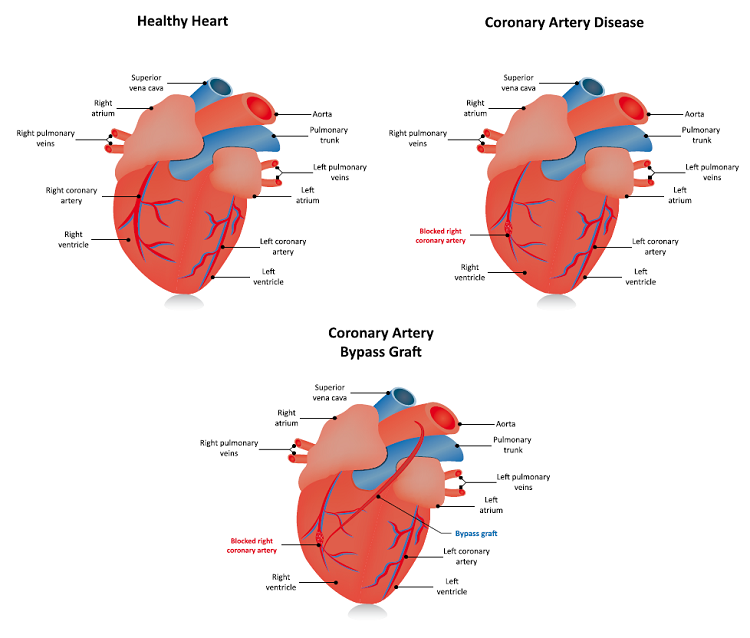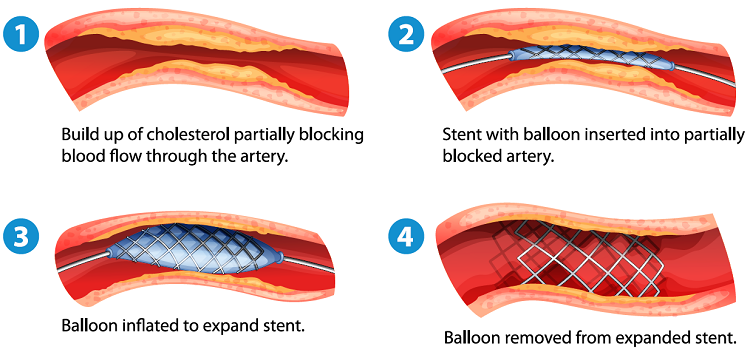Patients with angina symptoms that are not adequately controlled using two anti-anginal treatments should be considered for revascularisation. This can either involve a coronary artery bypass graft (CABG) or percutaneous coronary intervention (PCI).
A CABG involves bypassing the atherosclerotic narrowing by grafting blood vessels from elsewhere around the body onto the occluded coronary arteries.
PCI involves balloon angioplasty. The atherosclerotic plaque is crushed into the arterial wall by a balloon positioned and then inflated within the affected artery, a stent is then inserted to stretch the artery open.
Patients who are awaiting revascularisation or where the procedure is unsuitable may be prescribed a third antianginal drug.
Coronary Artery Bypass Graft
 Stent with Balloon Angioplasty
Stent with Balloon Angioplasty

